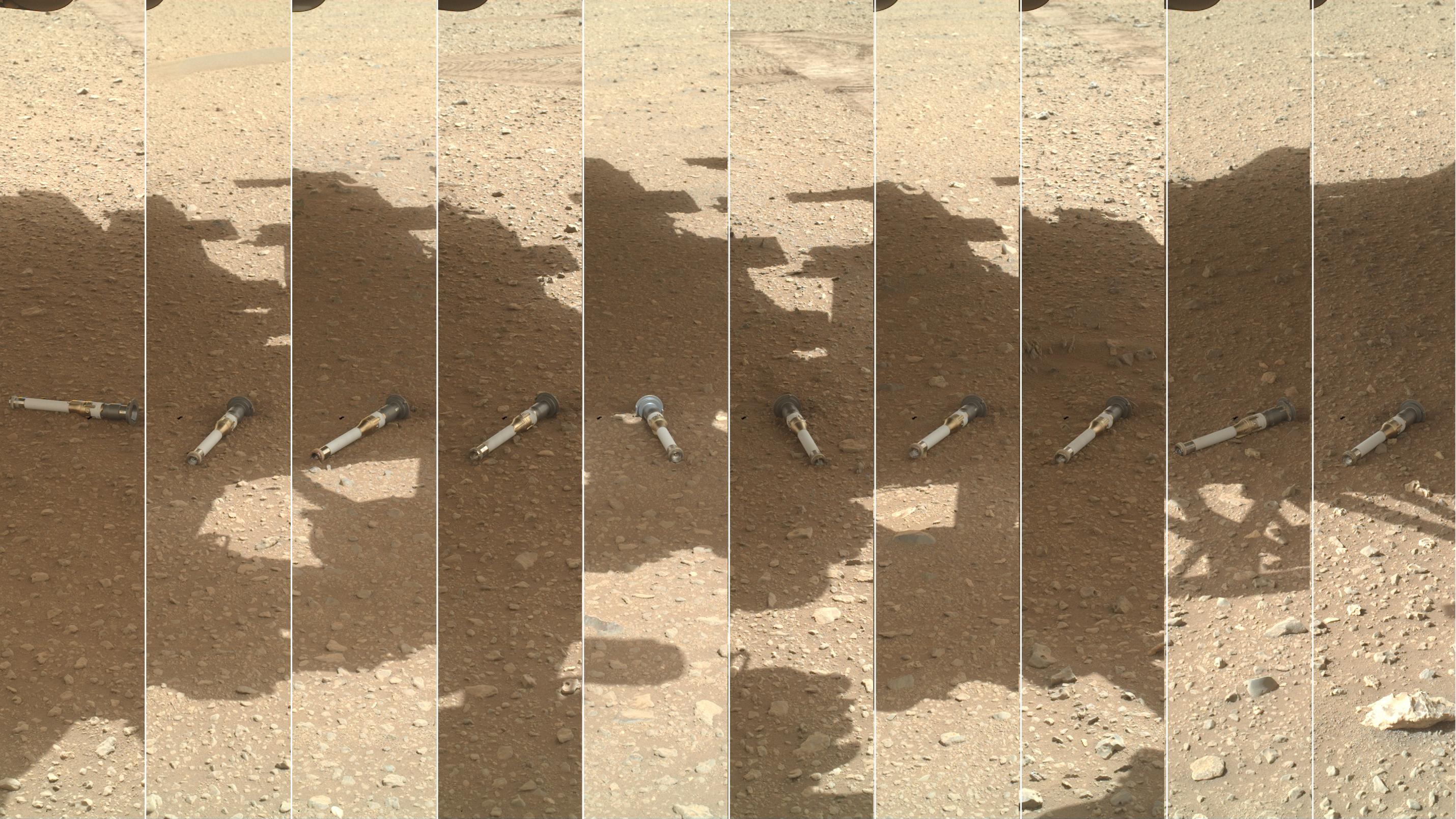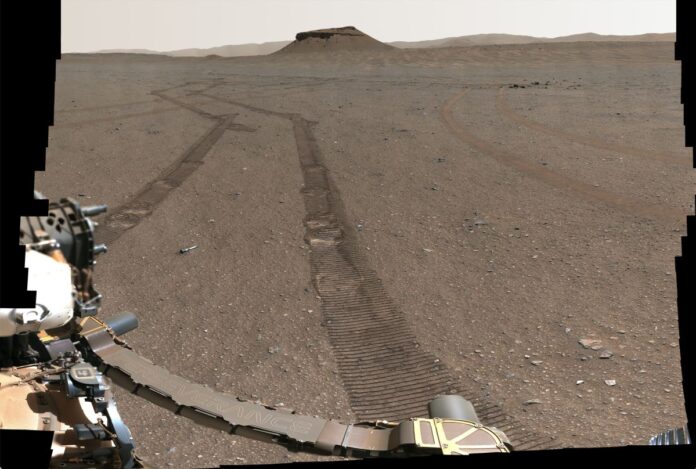NASA’s Perseverance Mars rover has recorded the first-ever off-Earth sample depot for posterity.
Perseverance built that depot on a patch of Martian ground called Three Forks over the course of five weeks beginning on Dec. 21, 2022. The cache contains 10 sealed titanium sample tubes, which a joint NASA-European Space Agency (ESA) campaign may end up bringing home to Earth a decade from now.
On Jan. 31, the car-sized rover took a series of photos to commemorate its recent work. Mission team members have now stitched together 368 of those images into a panorama, which shows the location of all 10 cached tubes.
Related: Mars sample return mission adds 2 helicopters, scraps ‘fetch’ rover
Perseverance and its tiny ride-along cousin, the Ingenuity helicopter, landed on the floor of Mars’ 28-mile-wide (45 kilometers) Jezero Crater in February 2021.
The rover has two main tasks: hunt for signs of past Mars life inside Jezero, which hosted a big lake and a river delta billions of years ago, and collect samples for future return to Earth. (Ingenuity has shifted from a technology-demonstrating mission to an extended phase during which it’s serving as a scout for Perseverance.)
The baseline sample-return architecture calls for Perseverance to deliver its sealed tubes to a rocket-equipped NASA lander, which will then launch them to Mars orbit. An ESA-built Earth Return Orbiter will snag them up there and haul the samples back to Earth, perhaps as early as 2033.
The orbiter and lander are scheduled to launch in 2027 and 2028, respectively. Perseverance is in good condition today, but there’s no guarantee it will be healthy enough to do this ferry work five or six years from now — and that’s where the Three Forks depot comes in. If Perseverance is out of the picture, two Ingenuity-like helicopters that will launch with the sample-retrieval lander will fetch the depot tubes one by one.

Perseverance brought 43 titanium tubes to Mars. Thirty-eight of these are designed to be filled with drilled rock cores or scooped dirt samples, while the other five are “witness tubes” that will help mission team members sniff out possible contaminants from Earth in the Martian material.
The rover has sealed three of its five witness tubes and 18 of its 38 sample tubes to date (opens in new tab). Of those sample tubes, 15 are filled with drilled rock cores, two contain loose dirt and one is an “atmospheric sample” — the result of Perseverance’s failed first-ever sample-collecting attempt, which went awry because its target rock was too crumbly to produce a good rock core.
Mike Wall is the author of “Out There (opens in new tab)” (Grand Central Publishing, 2018; illustrated by Karl Tate), a book about the search for alien life. Follow him on Twitter @michaeldwall (opens in new tab). Follow us on Twitter @Spacedotcom (opens in new tab) and on Facebook (opens in new tab).

